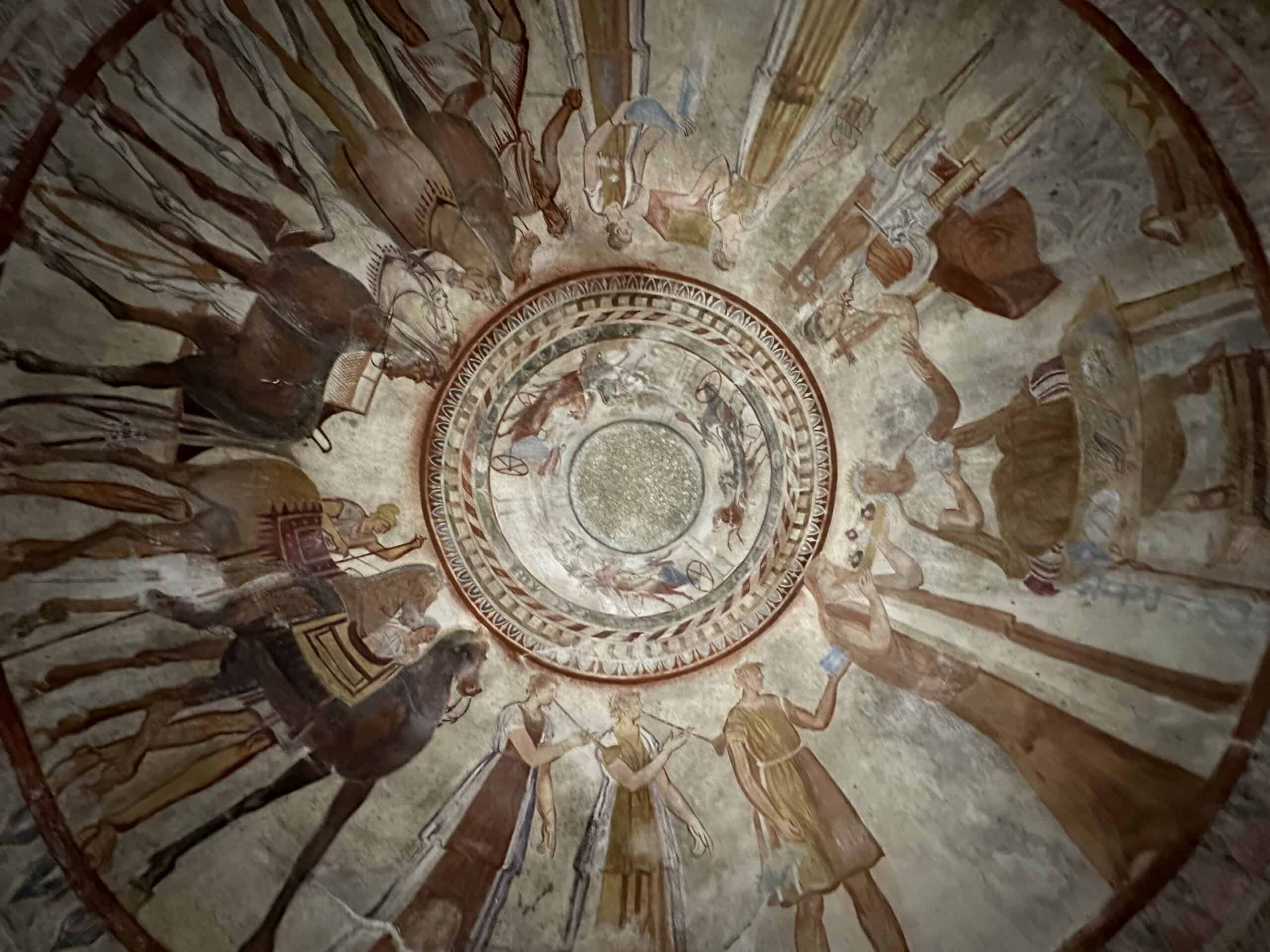
It is a tomb dating back to the fourth century BC and consists of a narrow-vaulted corridor that leads into a round burial chamber decorated with frescoes depicting the rituals and culture of Thracian burial.
These paintings are Bulgaria’s best-preserved artistic masterpieces from the Hellenistic period.
The tomb was discovered by chance by some soldiers in 1944 during the construction of a bunker.
Seuthopolis, present-day Kazanlak, was the capital of the Odorian kingdom and is located in the Valley of the Thracian Kings.
The tomb, according to recent studies, can probably be attributed to the sovereign Seuthes III, king of the Odorisi.
There are about 1500 tombs in the area, so much so that the area has been renamed the valley of the Thracian kings.
Next to the original tomb there is a museum in which the tomb is faithfully reproduced, very useful for periods when the climate and temperature do not allow the original tomb to be opened to the public.
The Thracian Tomb of Kazanlak was the first Bulgarian site to be inscribed on the UNESCO list.
The image of the seated woman in the fresco appears on the reverse of the Bulgarian 50 stotinki coin.













